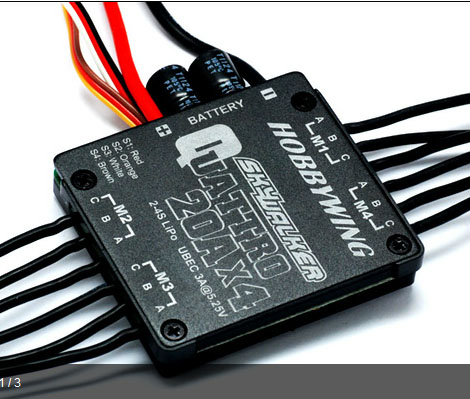When setting up a new quad, it's important to set the endpoints on each of the ESCs. Here's an easy way to do them all at once.
Grab a breadboard and five 3-way male pins. Four of these will be for the ESCs, and one of them will be for the throttle channel of the receiver.
Put the pins in the breadboard like this. This will allow all ESCs to be controlled at the same time by the receiver.
Hook up all the ESCs and the receiver. Make sure all the connections have the same orientation.
 Now follow the endpoint syncronization procedure for your ESCs. Almost all of them are similar to the procedure in section VII of this manual.
Now follow the endpoint syncronization procedure for your ESCs. Almost all of them are similar to the procedure in section VII of this manual.- remove any props if the ESC are in an airframe
- power up radio
- move throttle to max
- power up ESCs
- the ESCs will make their initial sound, then go into a continuous beep mode
- move the throttle to min
- the ESCs will make the final beep
- All ESC endpoints are now calibrated and consistent with each other.
blogodex = {"idx":"ESC"};







